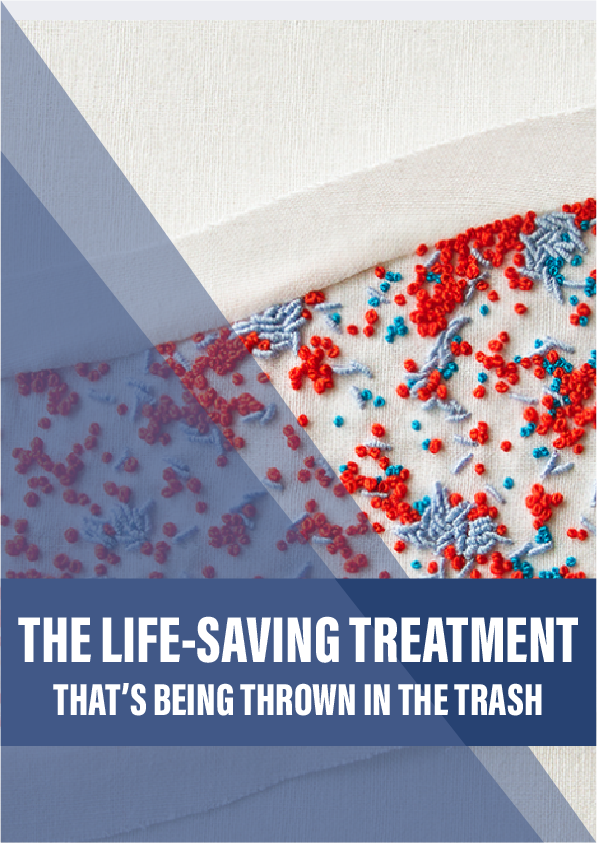A few hours before beginning chemotherapy, a man named Chris faces his cellphone camera with a mischievous smile and describes a perfectly absurd milestone at 1.37pm on a Wednesday. “There is no more beautiful moment in a man’s life…” he says with puckish glee. Because how can you not laugh when you’ve been invited to bank your sperm in advance of being “Godzilla-ed” with chemotherapy and radiation, all just four days after being diagnosed with acute myeloid leukaemia at the age of 43 and given a 5 to 15 per cent chance of survival?
Oh, and the fertility clinic forgot to send someone over with a specimen kit and they’re closing in little more than 20 minutes so you have to fire up your iPad for some quick visual stimulation to help you fill a sterile tube. Just try to ignore the legal consent paperwork all around you and the catheter that’s been surgically inserted into your jugular vein.
And because there are no couriers available, your sister – who has been running half-marathons to get in shape – gamely volunteers to tuck the freshly filled tube in her sports bra to keep it at body temperature before dashing the mile to the clinic. You imagine her arriving as the window is closing, lurching towards the counter and shouting “Nooooo!” in the slow-mo way they do in action movies. She hands over her precious cargo in the nick of time and triumphantly exclaims, “This is my brother’s!”
Nothing is normal about leukaemia or its aftermath, and Chris Lihosit has chosen to cope by learning everything he can about the disease and poking fun at its many indignities and absurdities. While some people with cancer are reluctant to share because they see it as a sign of weakness, he knows that humour and openness have a way of breaking the ice and maintaining visibility.
On the last day of 2015, Chris received one of the estimated 40,000 umbilical cord blood transplants performed around the world to date. Cord blood contains what are known as stem cells and progenitor cells, which can give rise to oxygen-carrying red blood cells, infection-fighting white blood cells and clot-forming platelets.
Transplanted cord blood can be used to treat or cure more than 80 conditions, from leukaemia to sickle-cell disease. Based on current research exploring autism, brain injury, cerebral palsy, type 1 diabetes and cardiovascular disease, among others, the list of potential applications is likely to grow. Emerging strategies are even transforming cord blood left over after birth into a potent potion that might provide lifesaving treatments for victims of a nuclear disaster.
Stem and progenitor cells are also found in the spongy marrow within some bones and in the blood that circulates around our bodies. But cord blood, once dismissed as medical waste, is particularly rich in these cells. As researchers are discovering, it may carry other significant advantages too.
While a cord blood transplant might save your life, though, going through the process and then starting anew – your survival down to an anonymous baby – is far from easy.
Reference:
- This review offers a fascinating look at the discovery and early history of leukaemia.
- A highly cited 2001 study was among the first to examine the fate of adult recipients of transplants from unrelated umbilical cord blood donors.
- A 2014 study suggested that cord blood transplants are improving access for minority groups who have struggled to find optimal adult bone marrow donors.
- This key 2016 paper, by Filippo Milano, Colleen Delaney and colleagues, suggested that cord blood transplants equalled or outperformed two other transplant options in treating patients with residual leukaemia, based on overall survival and relapse rates.
- A 2015 survey takes a sobering look at the existential challenges still facing many cancer survivors (lymphoma survivors, in this case).
- Two veterans of the Chernobyl medical response team provide their own take on the nuclear disaster’s lessons for future responses to radiation exposure.
- In the US, the National Marrow Donor Program’s Be The Match website offers explanatory videos, testimonials and a comprehensive overview of umbilical cord blood and transplants.
- In the UK, the National Health Service public cord blood bank and the Anthony Nolan register both provide useful information on how and why to donate cord blood.
- The Parent’s Guide to Cord Blood Foundation includes a timeline of key milestones and updates on clinical research.
- The Fred Hutchinson Cancer Research Center’s Cord Blood Program explains some of the science behind the utility of blood-forming stem and progenitor cells and the growing roster of clinical trials.
- For more information on the “universal donor” concept of cord-blood-derived therapies, Nohla Therapeutics includes several explainers on its website.











